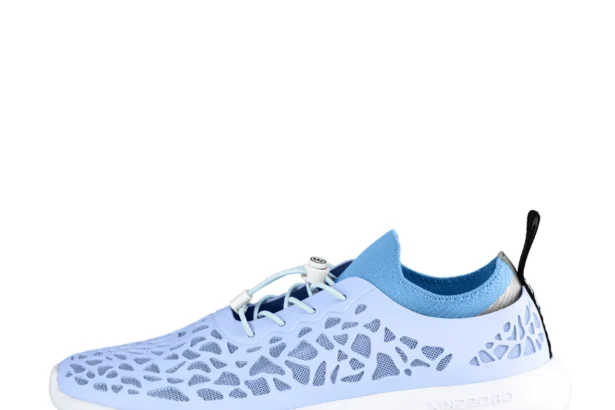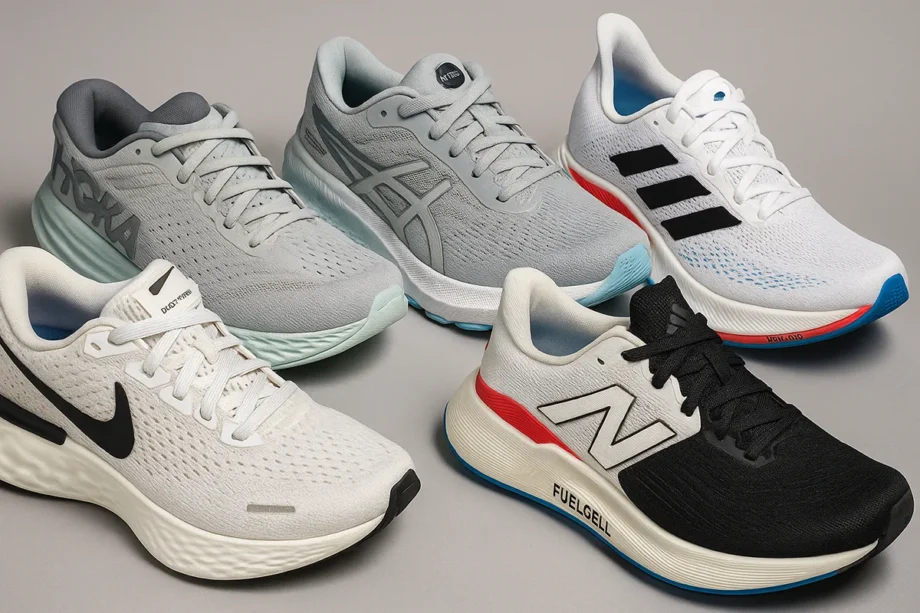Introduction: Is Your Favorite Running Shoe Still Living in the Past?
Foam is dead. At least, that’s what Carbon wants you to believe.
And honestly? They might have a point.
Their latest innovation, EPU 45, is a 3D-printed, high-performance midsole material that adapts to your stride. It’s 18% softer than its predecessor, more responsive, and smart enough to stiffen when you sprint while staying plush when you jog. It’s already excelling in NFL helmets for shock absorption. So why isn’t it in your running shoes?
That’s the million-dollar question.
In this article, we’ll spotlight five top running shoes that are practically begging for an EPU 45 upgrade. Some are bestsellers. Some are already dabbling in 3D printing. But none have fully embraced this next-gen tech. Not yet.
If your current pair still relies on EVA foam, TPU, or another outdated midsole system — keep reading. You might be running on borrowed time.
What Is EPU 45 and Why Should Runners Care?
Let’s break down the hype.
EPU 45 is Carbon’s latest entry in the 3D-printed elastomer lineup. It’s a polyurethane-based foam that changes its behavior based on impact force. Walk slowly? It feels soft and forgiving. Sprint or land hard? It stiffens to protect your joints and return energy.
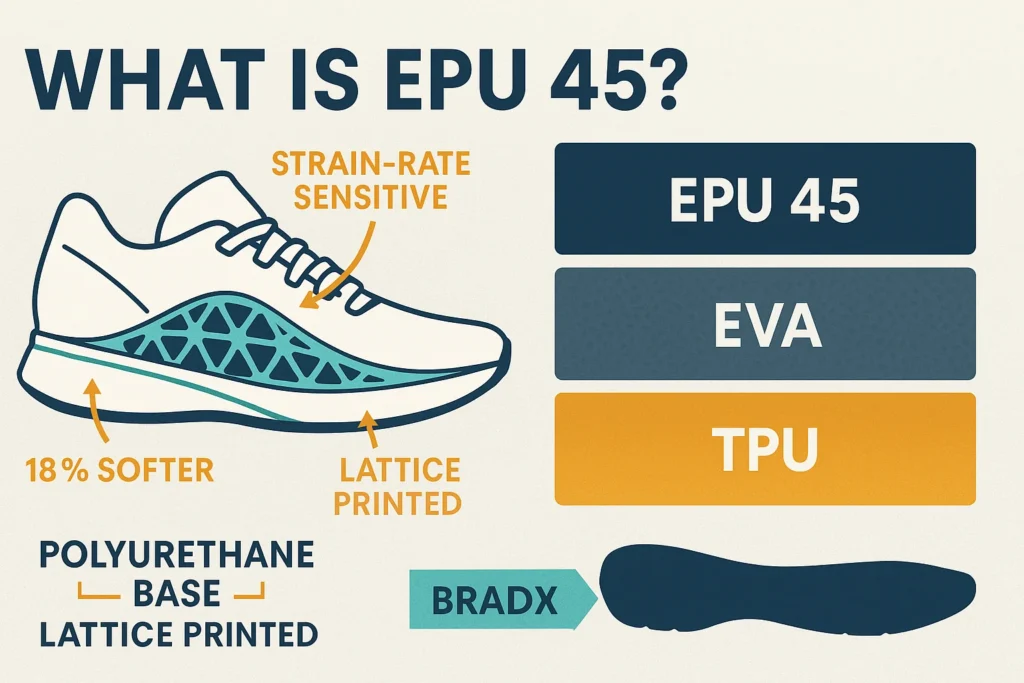
Why It Matters
- 18% softer than previous Carbon foams
- Strain-rate sensitive: adapts to your movement intensity
- Superior recovery: no midsole “pancaking” over time
- Already used in NFL and lacrosse protective gear
Skeptical? Carbon backs it up with lab results that show reduced peak impact forces compared to traditional materials. Combine that with customizable lattice structures, and you have a midsole that adapts to your foot strike, not the other way around.
Source: https://www.carbon3d.com/materials/epu-45/
Why Traditional Foams Are Slowing You Down
The Problem with EVA
EVA has long been the standard. It’s soft, cheap, and easy to mold. But it compresses and stays compressed, losing its cushioning quickly.
The Problem with TPU
TPU is bouncier and more resilient. But it’s also heavier and less adaptive. It offers uniform bounce across the foot — not ideal when your heel, arch, and forefoot all need different things.
What Makes EPU 45 Different?
- Retains its structure far longer than EVA
- Absorbs impact better than TPU
- Allows zone-specific tuning for customized support
- Made via lattice printing, not poured into molds
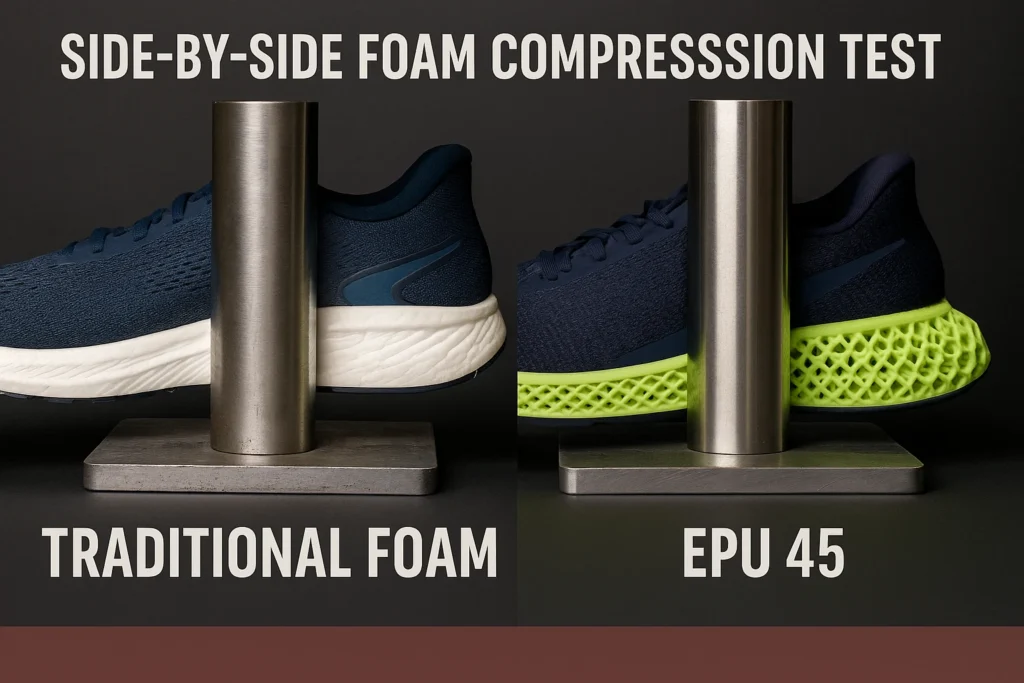
Bottom line: You’re still paying top dollar for tech that hasn’t evolved in a decade.
5 Popular Running Shoes That Would Be Way Better With EPU 45
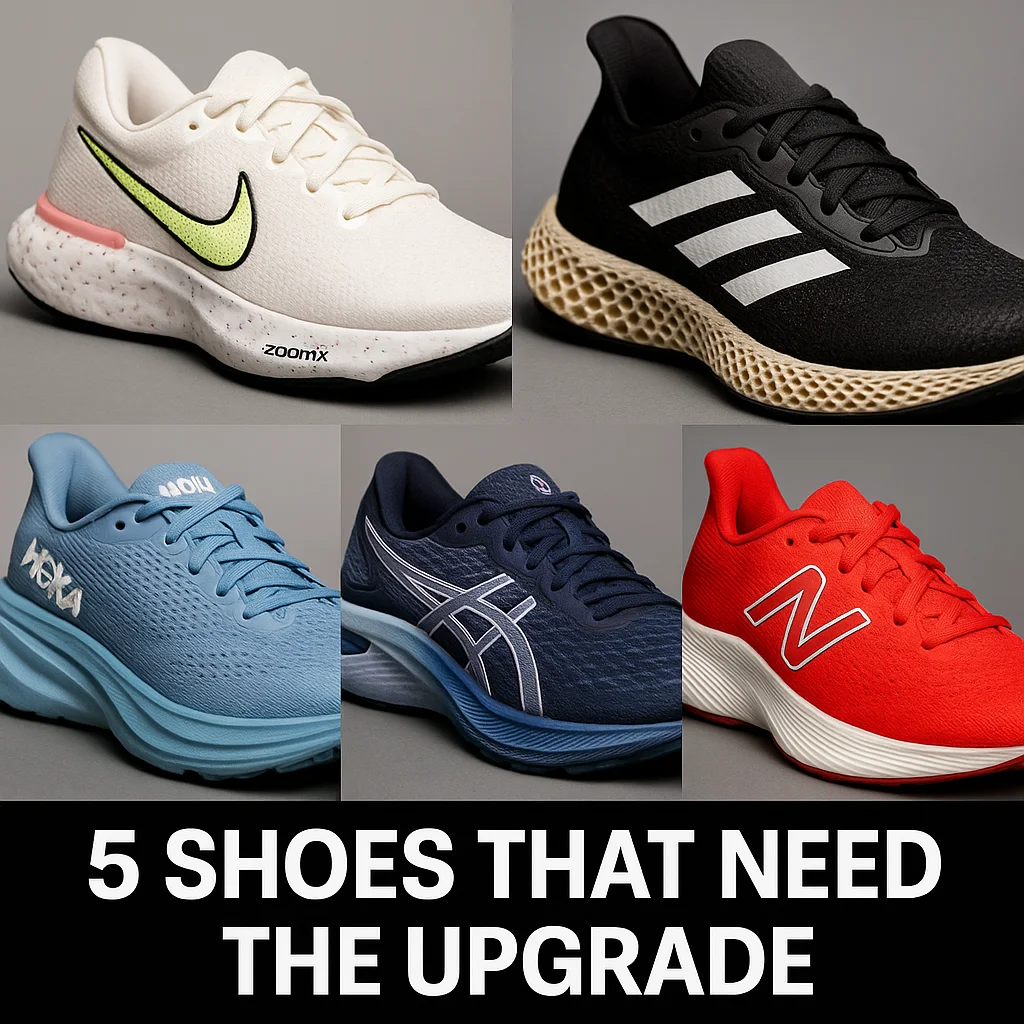
1. Nike Invincible 4
ZoomX is soft and energetic — until it breaks down. The Invincible is plush, but it bottoms out quickly, especially for heavier runners.
With EPU 45: Long-lasting cushion that retains its softness. Lattice zoning could cut weight while improving support.
“It’s time Nike made something truly smart, not just squishy.”
Amazon Listing – Nike ZoomX Invincible Run FK 3
2. HOKA Bondi 9
Marketed as ultra-cushioned, the Bondi relies on bulky EVA foam that adds weight and traps heat.
With EPU 45: HOKA could create a lighter, cooler version of the Bondi with better impact absorption.
Imagine a Bondi with actual innovation underfoot — not just foam bricks.
3. ASICS GEL-Nimbus 27
ASICS layers gel and foam for comfort, but it’s a workaround for modern cushioning.
With EPU 45: One intelligent layer could replace multiple, simplifying design and improving responsiveness.
“ASICS nailed comfort. Now it’s time they catch up on materials.”
Amazon Listing – ASICS GEL-Nimbus 27
4. New Balance FuelCell SC Elite v4
Built with traditional foam and a carbon plate, this super shoe follows the same formula as its rivals.
With EPU 45: Lattice tuning could create a springy forefoot and soft heel without needing a plate.
“If New Balance wants to innovate, this is the leap — not just another plate.”
Amazon Listing – New Balance FuelCell SC Elite v4
5. Adidas 4DFWD (Future Edition)
Already uses Carbon’s lattice midsole — but still stuck on EPU 44, which is firmer and less comfortable.
With EPU 45: Adidas could turn the 4DFWD into a legit daily trainer with comfort to match its tech appeal.
“Adidas, the pieces are in place — don’t blow it.”
Why Aren’t More Brands Using EPU 45?
1. It’s Expensive
Foam is dirt cheap. 3D printing is not — at least not yet.
2. It’s Complex
EPU 45 isn’t a drop-in replacement. It needs new geometry and manufacturing workflows.
3. Carbon Controls the Process
You don’t just buy the foam — you partner with Carbon. That adds friction for brands used to plug-and-play.
4. Brand Conservatism
Footwear giants are slow to change. If it’s selling, why fix it? But the tech gap is growing.
“It’s 2025. Shouldn’t we expect more from $180 shoes?”
What EPU 45 Could Mean for Running Shoe Innovation
EPU 45 is more than a material upgrade — it’s a design philosophy.
Game-Changing Potential
- Tuned cushioning zones: precise support from heel to toe
- Longer lifespan: fewer replacements, better value
- Sustainability: uses less material; EPU 46 is partially bio-based
- Custom fit: opens the door to 3D printed shoes tailored to your gait
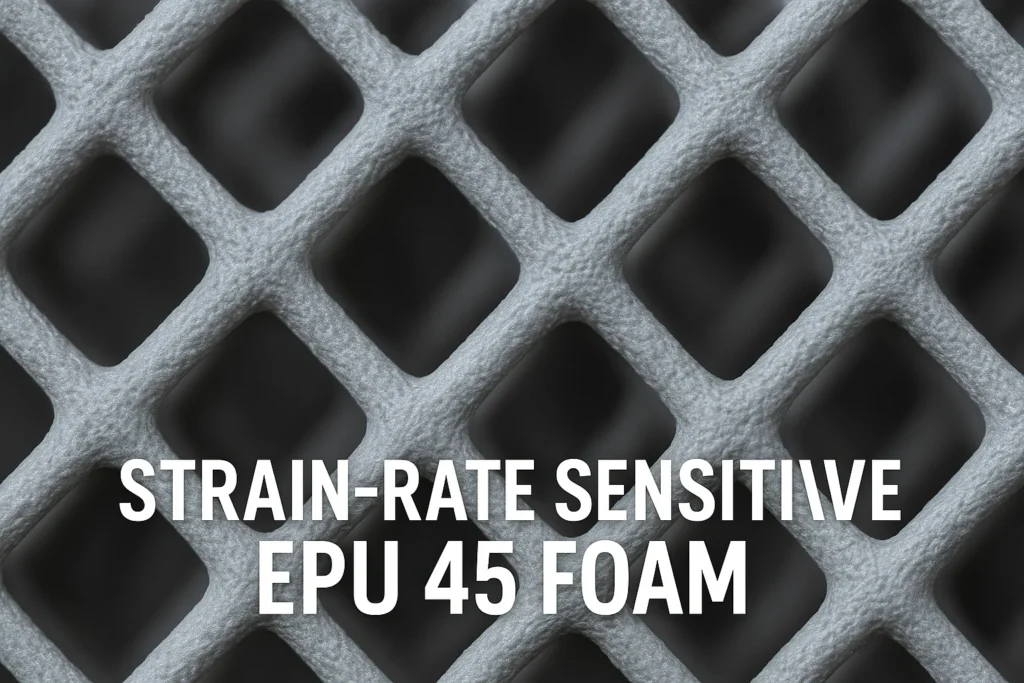
“EPU 45 isn’t just better foam. It’s an exit strategy from midsole mediocrity.”
Conclusion: Your Favorite Shoe Is Missing the Best Tech. Will Brands Catch Up?
EPU 45 is here. It’s real. It works. But your shoes are still stuck in the past.
We’ve outlined five models that could evolve overnight with smarter foam. Not replaced. Not hyped. Upgraded.
Nike. Adidas. HOKA. ASICS. New Balance. Your move.
Want to see this tech in your favorite pair? Tag your favorite brand and tell them it’s time.
FAQ
A 3D-printed, strain-sensitive polyurethane midsole material developed by Carbon.
Not yet. Adidas currently uses EPU 44 in its 4DFWD models.
EPU 45 offers greater durability than ZoomX and better adaptability than Boost, with superior impact protection and customization.


